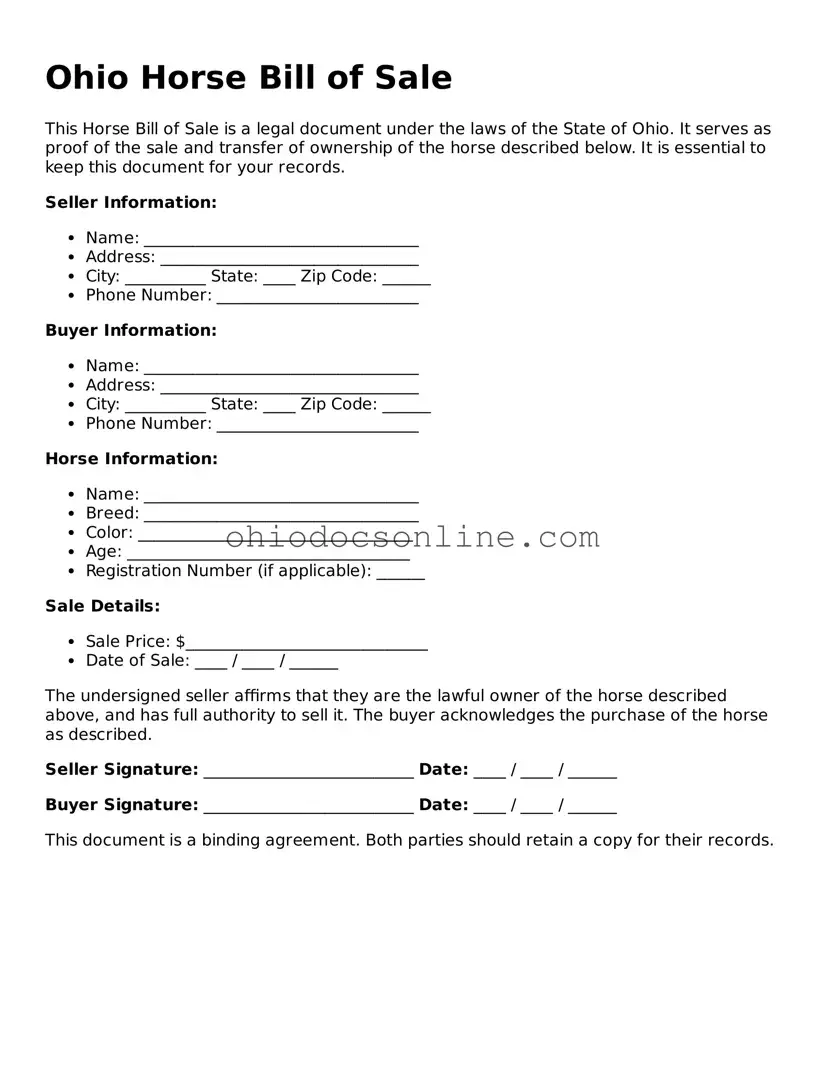Printable Horse Bill of Sale Template for Ohio
The Ohio Horse Bill of Sale form is a legal document that records the sale and transfer of ownership of a horse in the state of Ohio. This form serves as proof of the transaction, outlining essential details such as the buyer, seller, and horse description. Understanding this document is crucial for both buyers and sellers to ensure a smooth transfer of ownership.
Open Editor
